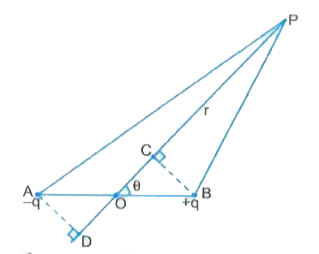Text Solution
Verified by Experts
|
Topper's Solved these Questions
ELECTROSTATIC POTENTIAL AND CAPACITANCE
U-LIKE SERIES|Exercise LONG ANSWER QUESTIONS-II|13 VideosView PlaylistELECTROSTATIC POTENTIAL AND CAPACITANCE
U-LIKE SERIES|Exercise SELF ASSESSMENT TEST|1 VideosView PlaylistELECTROSTATIC POTENTIAL AND CAPACITANCE
U-LIKE SERIES|Exercise SHORT ANSWER QUESTIONS|48 VideosView PlaylistELECTROMAGNETICE INDUCTION
U-LIKE SERIES|Exercise Self Assessment Test Section -D|1 VideosView PlaylistEXAMINATION PAPER 2020 (SOLVED)
U-LIKE SERIES|Exercise SECTION D|6 VideosView Playlist
Similar Questions
Explore conceptually related problems
Knowledge Check
Similar Questions
Explore conceptually related problems
U-LIKE SERIES-ELECTROSTATIC POTENTIAL AND CAPACITANCE -LONG ANSWER QUESTIONS-I
- Three concentric metallic shells A , B and C of radii a, b and c (a lt...
Text Solution
|
Play - Three concentric metallic shells A , B and C of radii a, b and c (a lt...
Text Solution
|
Play - Establish a relation for electric potential due to short dipole at a p...
Text Solution
|
Playing Now - Explain the underlying principle of working of a parallel plate capaci...
Text Solution
|
Play - Explain the underlying principle of working of a parallel plate capaci...
Text Solution
|
Play - Explain the underlying principle of working of a parallel plate capaci...
Text Solution
|
Play - Find an expression for the equivalent capacitance of a combination of ...
Text Solution
|
Play - Deduce an expression for the capacitance of a parallel plate capacito...
Text Solution
|
Play - Obtain an expression for the capacitance of a combination of three cap...
Text Solution
|
Play - Deduce an expression for the electrostatic energy stored in a capacita...
Text Solution
|
Play - Deduce an expression for the electrostatic energy stored in a capacita...
Text Solution
|
Play - A parallel plate capacitor of capacitance C is charged to a potential ...
Text Solution
|
Play - A parallel plate capacitor of capacitance C is charged to a potential ...
Text Solution
|
Play - A parallel plate capacitor of capacitance C is charged to a potential ...
Text Solution
|
Play - A parallel plate capacitor is charged by a battery . After sometime th...
Text Solution
|
Play - A parallel plate capacitor is charged by a battery . After sometime th...
Text Solution
|
Play - A parallel plate capacitor is charged by a battery . After sometime th...
Text Solution
|
Play - A parallel plate capacitor , each with plate area A and separation d ,...
Text Solution
|
Play - A parallel plate capacitor , each with plate area A and separation d ,...
Text Solution
|
Play - A parallel plate capacitor , each with plate area A and separation d ,...
Text Solution
|
Play
